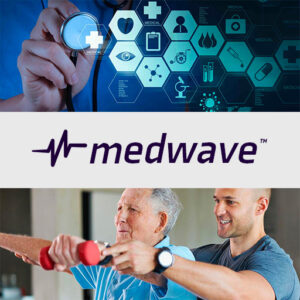
Remote patient monitoring (RPM) is a way of using digital technology to monitor patients outside of traditional clinical settings. RPM allows healthcare providers to track health metrics such as blood pressure, heart rate, weight, blood glucose levels and more from a distance. This provides a way to observe patients closely without requiring in-person visits.
Remote Patient Monitoring (RPM) Benefits
RPM has become increasingly common in recent years as technology has improved and allowed for more seamless data collection and transmission.
There are significant potential benefits to RPM including:
- Increased access to care and reduced costs – Patients can be monitored wherever they are instead of having to visit clinics frequently. This saves time and money for both providers and patients.
- Improved outcomes – Closer monitoring enables earlier interventions when health declines and preemptive care. Studies show RPM improves outcomes for chronic conditions like diabetes, heart failure and COPD.
- More personalized care – Having real-time data enables providers to track vitals and symptoms specific to each patient for customized treatment plans.
- Patient engagement – RPM empowers patients to be more involved in their health through self-monitoring. This enhances their knowledge and motivation to follow care plans.
While promising, remote patient monitoring also poses new challenges, especially when it comes to proper billing and documentation to ensure services get reimbursed. This page provides an overview of RPM billing, including coding, eligibility, reimbursement and compliance considerations.
CPT Codes for RPM Services
The main Current Procedural Terminology (CPT) codes to know for RPM billing are:
99453
Initial set-up and patient education on use of equipment. This code is for the initial provision of devices, instructions and set-up required prior to starting remote monitoring. It can be billed once per episode of care.
99454
Device(s) supply with scheduled (e.g., daily) recording(s) and/or programmed alert(s) transmission to monitor respiratory system (eg, heart rate, oxygen saturation, respiratory flow rate), each 30 days. This is for the monthly monitoring of physiologic data like heart rate, blood pressure, weight, etc. It can be billed once every 30 days.
99457
Remote physiologic monitoring treatment management services, clinical staff/physician/other qualified healthcare professional time in a calendar month requiring interactive communication with the patient/caregiver during the month. This is for monthly remote monitoring that involves live, interactive communication between providers and patients such as phone calls, video conferencing and online messaging.
99458
Remote physiologic monitoring treatment management services, clinical staff/physician/other qualified healthcare professional time in a calendar month requiring interactive communication with the patient/caregiver during the month, each additional 20 minutes An add-on code for 99457 for each additional 20 minutes of interactive communication per month.
To bill for RPM, providers must use a combination of these CPT codes depending on the type and duration of monitoring and communication provided. Proper linking of the codes reflects the full scope of remote services.
Billing Requirements
There are specific billing rules and documentation that providers must follow to receive RPM reimbursement:
- Patient consent – Get written or verbal consent from the patient to receive RPM services prior to billing. Consent should be documented in the medical record.
- Medical necessity – Establish that RPM is medically necessary for the patient based on their condition. Include an order from the billing practitioner recommending RPM.
- Face-to-face visit – An initial in-person visit is required to determine medical necessity and give RPM instructions. This is billed separately from RPM codes.
- Interaction – For codes 99457 and 99458, there must be two-way, live communication between provider and patient such as phone, email or portal messaging. One-way monitoring does not qualify.
- Time – For 99457, at least 20 minutes of interactive communication must occur each month. For 99458, each additional 20 minutes is billed on top of the base 20 minutes for 99457.
- Diagnosis codes – Include diagnosis codes reflecting the patient’s monitored conditions. Link the proper ICD-10 codes to CPT codes.
- Medical records – Document details of RPM services including parameters monitored, transmission frequency, communication and duration in the patient’s medical record.
Careful adherence to billing guidelines is necessary for compliant RPM billing. Providers should ensure all components are met prior to submitting claims.
Eligible Practitioners and Services
Most RPM services must be billed under a physician’s National Provider Identifier (NPI).
Eligible practitioners include:
- Physicians
- Nurse practitioners
- Physician assistants
- Certified nurse midwives
- Clinical nurse specialists
Other qualified health professionals may provide aspects of RPM under physician supervision per Medicare policy including:
- Registered nurses
- Licensed practical nurses
- Medical assistants
- Certified diabetes educators
RPM services typically billed under a physician include:
- Equipment set-up
- Patient instructions
- Transmission of data
- Communication and education
- Treatment recommendations
Auxiliary staff may perform device setup, vitals transmission and non-complex patient communication. The extent of their involvement must be documented and appropriately supervised by the physician.
Many payers have specific rules for who can bill each CPT code and what services are included. Providers should verify guidelines with all contracted payers before billing RPM.
Reimbursement Considerations
Reimbursement for RPM continues to evolve as usage increases.
Considerations for coverage include:
Medicare
- Requires patient have a chronic condition such as COPD, diabetes or hypertension
- Initial in-person visit is reimbursed separately under regular evaluation and management codes
- 99453 for set-up can be billed once per episode of care
- 99454 for monitoring can be billed for up to 3 unrelated chronic conditions
- 20 minutes of interactive communication required for 99457
Commercial Insurance
- Policies are inconsistent between plans
- Some cover RPM for a wider range of conditions
- Time requirements may differ
- More favorably reimburse live video interactions
Medicaid
- Few States reimburse for RPM under Medicaid currently
- Coverage is largely limited to programs involving use of RPM
- Payment amounts and eligible codes can vary significantly
When verifying reimbursement, confirm details including eligible:
- CPT/HCPCS codes
- Providers
- Settings
- Technology
- Diagnosis codes
- Time requirements
Compliance Considerations
RPM billing must meet general healthcare regulatory requirements including:
HIPAA
- RPM transmission systems must be HIPAA-compliant to protect patient privacy and data security
Stark Law
- Provides devices for free or below fair market value to induce patient referrals
Anti-kickback Statute
- Receive payments or other incentives from device manufacturers that improperly influence use of their products/services
Documentation and Coding Requirements
- All billed CPT codes must be properly documented
- Only bill for time spent on billable activities
- Use correct ICD codes that represent monitored conditions
In addition, RPM has some specific areas of concern:
Overutilization
- Use reasonable medical criteria for initiating RPM and ending services when no longer required. Avoid overuse solely for added reimbursement.
Technology Compliance
- Ensure RPM technology meets security and capability requirements for care standards and billing.
Advertising
- Marketing must not misrepresent RPM capabilities or guarantees of results. Have proper disclaimers.
With appropriate systems, technology, documentation, coding and responsible oversight, providers can implement RPM effectively while remaining compliant. Having clear policies will help avoid areas of risk and ensure services are provided and billed properly.
Remote Patient Monitoring Credentialing
Specialized Provider Enrollment for RPM Programs
Remote Patient Monitoring (RPM) programs require specialized credentialing expertise to navigate the rapidly evolving regulatory landscape and payer requirements for virtual care delivery. Our credentialing team manages enrollment for physicians, nurse practitioners, physician assistants, and clinical support staff who provide RPM services, ensuring compliance with telehealth licensing requirements across multiple states and maintaining proper credentialing with payers who cover remote monitoring services.
We understand the unique challenges of credentialing for technology-enabled care delivery, including requirements for secure communication platforms, patient data management systems, and remote monitoring device oversight. Our expertise extends to managing provider enrollment for chronic care management, principal care management, and transitional care management services that often complement RPM programs, while ensuring compliance with Medicare and commercial payer guidelines for remote physiologic monitoring codes.
We streamline the credentialing process for both individual providers and RPM program administrators, enabling healthcare organizations to expand their virtual care capabilities while maintaining optimal reimbursement relationships and regulatory compliance in this innovative field of healthcare delivery.
Summary: RPM Billing, Credentialing
 Remote patient monitoring offers the opportunity to improve care quality, access and cost-effectiveness through technology, while requiring specialized credentialing and billing expertise to navigate this rapidly evolving healthcare delivery model. Successful RPM programs must ensure proper credentialing of physicians, nurse practitioners, and clinical support staff across multiple states and payer networks, while maintaining compliance with telehealth licensing requirements and technology-enabled care regulations.
Remote patient monitoring offers the opportunity to improve care quality, access and cost-effectiveness through technology, while requiring specialized credentialing and billing expertise to navigate this rapidly evolving healthcare delivery model. Successful RPM programs must ensure proper credentialing of physicians, nurse practitioners, and clinical support staff across multiple states and payer networks, while maintaining compliance with telehealth licensing requirements and technology-enabled care regulations.
Our specialized approach addresses both the credentialing challenges of enrolling RPM providers with appropriate virtual care networks and the complex billing requirements that demand attention to coding specifications, managed care contracts, medical necessity documentation, and legitimate technology use standards.
Ensuring proper provider enrollment and adherence to compliance requirements allows healthcare organizations to effectively leverage RPM technology while optimizing reimbursement, avoiding penalties, and maintaining the regulatory standards essential for delivering safe, effective remote patient care.
